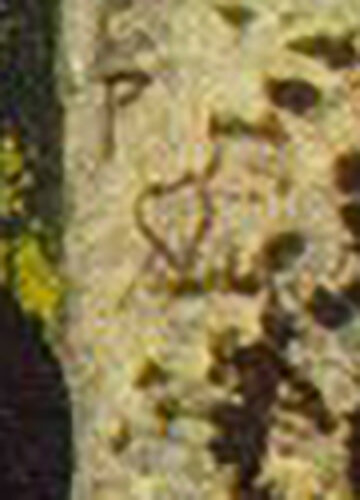MONET AND CAMILLE AND THEIR NOT-SO-SECRET LIFE
Camille Doncieux was Monet's model, mistress, wife and mother of his two children -- or should I say, mother of two of his children, as I will explain in a later post. But their relationship is far more complex than that would indicate. Both Camille and Monet had illegitimate half siblings. Monet's mother died January 28th, 1857, when Monet was 16 years old. On January 3rd, 1860 Monet's father at age 60 had an illegitimate child with his 24 year old servant. Camille's mother worked and her father was either retired or unemployed. The circumstances around her half-sibling are not clear. But her situation was sufficiently inhospitable that she left home early to make her way in Paris. She worked first as a seamstress, but later became Monet's model and, as so often happened, his mistress. Monet kept his relationship with Camille secret from his family, as he knew that to reveal it would have put his income in jeopardy.
His father and aunt were willing to support him, but only as long as he was seriously pursuing his studies as an artist. This relationship would have been unacceptable to them. I believe that artists often reveal themselves in their work, especially when it is not possible to express things by other means. Monet's "Dejeuner sur L'Herbe" is particularly interesting in that regard.
In this painting, Camille has assumed the role of each of the women in the painting. She stands next to Bazille, who also poses for several parts, as his equal. In this sense Monet has raised her status and reveals to us that he considers her his social equal and someone he is happy to show off to his artist friends. His relationship to her is further indicated by the heart carved into the tree.
You might also notice, that to the right there is a man hiding out behind a tree. As often as I have looked at this painting, I had not noticed him until Mary Mathews Gedo pointed him out in her book, "Monet and his Muse". While this man is probably meant to be a servant in the painting, Gedo believes he may be a stand in for Monet's father lurking somewhere in the background about to find Monet out.
Monet had ambitious plans for this painting and wanted to submit it to the Salon as a piece to rival both Manet and Courbet (who, by the way, is posing as the man sitting on the left).But he was not able to finish it in time.
Courbet suggested to him that he do something a little less grand that he could finish in time. Monet painted "Camille: Woman in a Green Dress". At first glance, this could be a painting of any society woman just entering the house from a turn in the garden where she has picked a flower. Flower, you say? What flower? Camille carries in her hand a violet. Yes, once again [see Manet's Secret Love] an artist is revealing his secret love with the language of flowers. The meaning was not lost on the critics, one of whom, who wrote for the Journal du Harve, the hometown paper of Pere Monet, not only revealed that Camille was Monet's mistress, but implied that she was a prostitute. Despite his own odious behavior toward his servant girl, Pere Monet condemned Camille and stopped any further support of Monet.





